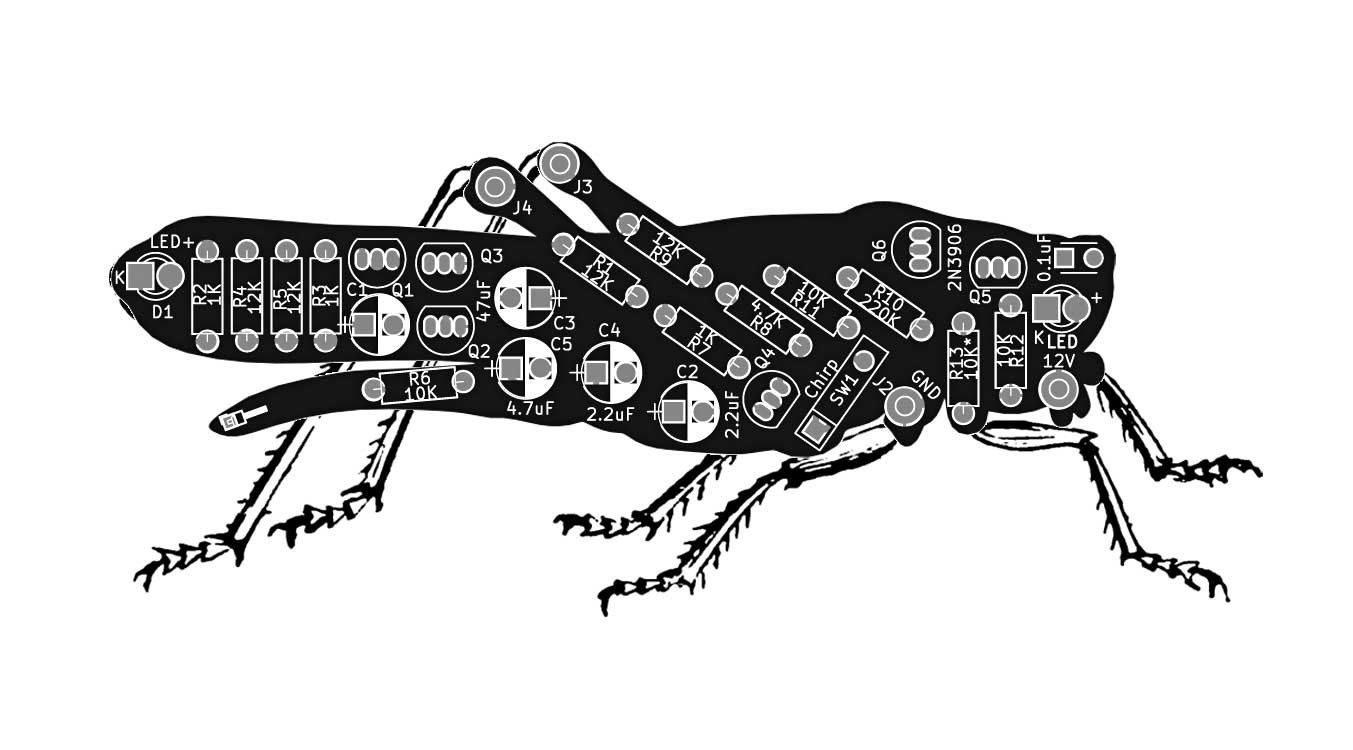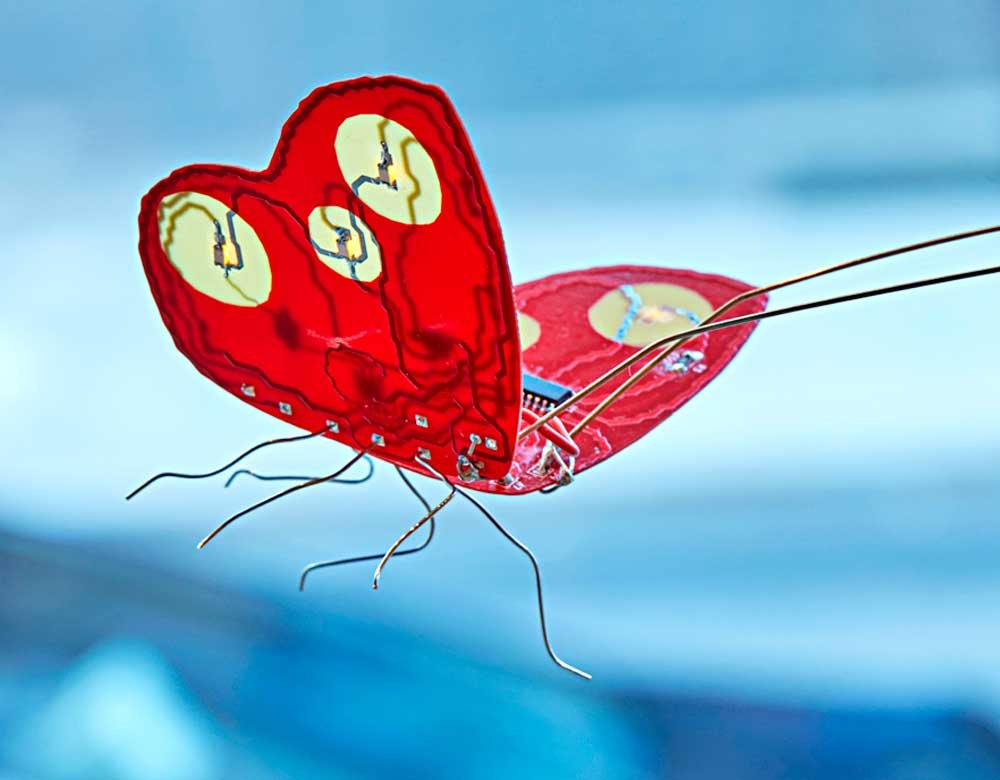ELECTRONIC NATURALISM, since 2005
“As I grew up I was fervently desirous of becoming acquainted with Nature.”
Naturalism is a philosophy of observation concerned with seeing deeply and without artifice. We typically associate naturalism with scientific illustration —a faithful rendering of a creature’s physical form— but this is an incomplete portrait of its living spirit. Electronic Naturalism is the practice by which I explore the invisible, energetic nature of lifeforms.
What vital energy engenders consciousness? European cultures talk about soul. Chinese philosophers call this force Qi, while the Hindu Upanishads describe prāṇa. I think consciousness arises from the flow of electricity within an intelligent structure.
Ramayana, 2012. Electronics, conductive ink, gesso, and colored pencil on paper. 15” x 15” x 1”
Because soul is not visible —and neither is electricity except for extreme cases— electronic naturalism contains an interesting paradox: how do we faithfully represent something that does not natively inhabit the visible spectrum? This is why I am an artist and not a scientist: I seek knowledge on the outskirts of understanding, in the sensational and paranormal realms, where methods of empirical proof do not yet exist.
Kundalini, 2018. Electronics and watercolor on paper. 12” x 9” x 2”
The sonic “jungle” in my studio, Fall 2021
a brief HISTORY OF ELECTRONIC NATURALISM
The timeline of electronic naturalism reveals my development as an electrical engineer. In 2005, when I began making my own circuits for the first time, I could only light up an LED. Below, you can see my first electronic work on paper, “The Beginning,” 2005. It depicts the birth of soul in a recently conceived multi-cellular organism.
The Beginning, 2005. Electronics, charcoal, and gouache on paper. 30” x 22”
It took me seven years to develop a portfolio of “living pictures” for exhibition. The Parallel Series, 2012 was my first solo show dedicated to electronic naturalism.
Lonesome Bird Cries, 2011. Electronics, watercolor, and colored pencil on paper, 15” x 15” x 1” VIDEO
For many years, I was motivated by my desire to build a circuit that generated convincing birdsong because this seemed like solid evidence of machine intelligence arising from analog electronic hardware. Early examples of my electronic birdsong were fragile and highly repetitive. For many years, my most convincing works of electronic naturalism were made with chirping insects. I documented this process in my project, Hacking Nature’s Musicians which is web-archived on Hackaday.io.
Electricity, vibration, and the building blocks of consciousness
Creatures exist along a spectrum of awareness. The human being is a structure of exquisite intelligence; a bird perhaps less so. Yet electricity flows through both beings to give forth unique character, behavior, and presence. This is the magic of soul, for which I think electricity is literally the spirit medium — the spark of life. My circuits are very simple relative to humans, birds or even computers, but I think they offer profound insights into the nature of consciousness.
Analog electronic songbird, 2019. Electronics and mylar, 8” x 11” x 4”
Nightjar is one in a series of birdsong generating circuits that I have made since 2018. The circuit is a system of passively coupled oscillators, like a simple mesh of electronic springs, that vibrate in the audible range. Potentiometers (visible as knobs) can be used to alter resistance in the circuit, changing the frequency of the electrical vibrations. We hear these changes as different “bird songs.” For more information about the circuit design, read about Deep Fake Birdsong, 2020.
Electronic birdsong generation in Nightjar, 2022. Available for purchase through Adafruit starting in Spring 2023.
Nightjar is an analog electronic instrument that mimics synapses, brainwaves, and vocalization. Consider the electrical activity in the brain of a mouse (below) — it oscillates to generate the brainwaves of mouse consciousness.
Many of my naturalistic circuits are analog, because direct physical vibration is life-like. To quote two of my favorite electrical engineers:
“If you want to find the secrets of the universe, think in terms of energy, frequency and vibration.”
“Analog electronics parallels living organisms while programmable logic merely simulates life.”
The difference between digital and analog electronics is important, but not widely understood. Digital relies on binary patterns made with electrical pulses, also known as “bits” or 1s and 0s. Bits are used to form complex code sequences, analogous to strands of DNA. Digital is a linguistic technology because electricity is used to encode binary sequences that have defined meaning. By contrast, analog circuits work with continuous waveforms. Analog electronic devices do not read or write pre-defined sequences of code: their physical design and constitution shapes electricity into complex patterns of vibration. To use a metaphor, the resonant sound quality of a drum is analog, whereas the drum beat is digital.
Analog electronics can be life-like with drastically fewer components than a digital solution. If Nightjar can generate so many patterns of birdsong with only six oscillators, what complexity would arise from a mind with billions of coupled neurons oscillating together to form subtle brainwaves? William Grey Walter asked this question in 1949 with his Tortoises, and Mark Tilden invented similarly intelligent circuits with his BEAM robotics in the 1990s.
“He wanted to prove that rich connections between a small number of brain cells could give rise to very complex behaviors - essentially that the secret of how the brain worked lay in how it was wired up.”
Do the vast electrical connections in the human mind give rise to consciousness?
“It is unlikely that the number of perceptible functional elements in the human brain is anything like the total number of nerve cells; it is more likely to be on the order of 1,000. But even if it were only 10, this number of elements could provide enough variety for a lifetime of experience for all the men who ever lived or will be born if mankind survived a thousand million years.”
Analog electronic songbird connected to my oscilloscope for the purposes of watching its electric soul, 2019. The repeating song pattern eventually “falls” due to a large capacitor that discharges the entire circuit.
Imagine the complexity generated by billions of coupled oscillators, as is the case with the human brain. The magnitude and nonlinearity of scale is impossible to fathom. Perhaps there is no ghost in the machine because the machine is an analog electronic ghost maker.
Technology is heavily focused on digital design because it is expedient for logical and reproducible computation. However, analog electronic design is better suited to the fuzzy, continuous domain of emotion, intuition, and psychic premonition. I talk about my theories of analog electronics and intelligence at greater length in this presentation about my collaboration with Johann Diedrick, Deep Fake Birdsong, 2020.
My process of discovering naturalistic sounds involves building a schematic and tweaking it, as shown in this video from 2019




















